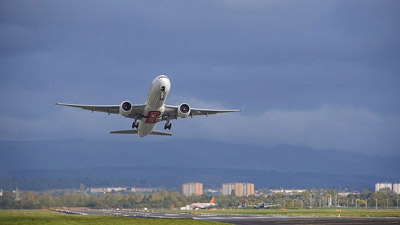NATS reports fall in greenhouse gas aircraft emissions in 2015
Posted: 27 June 2016 | Katie Sadler, Digital Content Producer, International Airport Review | No comments yet
NATS has revealed there was a reduction in greenhouse gas aircraft emissions during 2015 according to its annual Responsible Business report.


NATS has revealed there was a reduction in greenhouse gas aircraft emissions during 2015 according to its annual Responsible Business report.


On the 27 June 2016, air navigation services provider (ANSP), NATS published findings of its annual Responsible Business report. Highlights include a reduction of 34,195 tonnes in ATM-related CO2 emissions, a 6.6 per cent reduction in estate CO2 emissions and an increase in the number of quieter flight descents into 15 UK airports including Heathrow, Gatwick and Bristol airports.
1.1 million tonnes of ATM-related CO2 emissions reduced per annum
According to NATS it has enabled reductions of 1.1 million tonnes of ATM-related CO2 emissions per annum, as a result of combined annual savings since 2008, adding up to a total of £111m in airline fuel savings.
Join us live: Shaping the Next Generation of Hold Baggage and Air Cargo Screening
Join us live for an insightful webinar on 11th December at 14:00 GMT, in collaboration with Smiths Detection, as we explore the strategic balance of operational efficiency, regulatory compliance, and sustainability in high-volume security environments.
This session offers a focused look into future-proofing your security strategy.
Key learning points
- Cost Reduction: Strategies to minimize bag travel time while simultaneously reducing operational costs.
- Regulatory Roadmap: Insights into the next wave of regulatory changes and their impact on future investment decisions.
- Sustainable Systems: Practical approaches to building sustainability into security systems and lowering the total cost of ownership (TCO).
- Scalable Solutions: Real-world examples of scalable systems supporting current airport growth and preparing for tomorrow.
Register now for expert insights, case studies, and actionable strategies on operational efficiency!
Reduction in aircraft emissions aided by greater direct routes and improved vertical profiles
According to the ANSP, the improvements are the result of changes to UK airspace that allow for more direct routes and improved vertical profiles, the use of more efficient procedures such as continuous instead of stepped climbs and descents, and the introduction of new air traffic control technologies.
In conjunction with the Civil Aviation Authority (CAA), in 2012 NATS introduced three dimensional inefficiency (3Di) methodology for measuring airspace efficiency to help assess day-to-day progress towards more efficient and environmentally friendly use of the skies in the face of ever-increasing levels of air traffic. In 2015, an average score of 30.1 3Di was achieved, this is within the service performance range set by the CAA as regulator, and slightly behind the target level of 29.7.
“Our work with our airline and airport customers continues be successful in shrinking aircraft CO2 emissions”
Ian Jopson, Head of Environmental and Community Affairs at NATS, said: “Our work with our airline and airport customers continues be successful in shrinking aircraft CO2 emissions and, whenever possible, reducing aircraft noise.
“Air traffic is returning to volumes seen before the financial crisis of 2008, so our achievement of continuing to make CO2 emission savings should be viewed in the context of busier skies as more and more flights take place.
“An important part of managing the impact of increasing air traffic is undertaking meaningful engagement with airport communities on their experience of our operation and with this in mind we have recently appointed a new community relations manager to ensure open dialogue with everyone concerned, taking the big picture into account.
“Large-scale airspace change will help to deliver significantly cleaner, quieter air traffic operations and this report will form much of that ongoing conversation.”
Join our free webinar: Revolutionising India’s travel experience through the Digi Yatra biometric programme.
Air travel is booming, and airports worldwide need to move passengers faster and more efficiently. Join the Digi Yatra Foundation and IDEMIA to discover how this groundbreaking initiative has already enabled over 60 million seamless domestic journeys using biometric identity management.
Date: 16 Dec | Time: 09:00 GMT
rEGISTER NOW TO SECURE YOUR SPOT
Can’t attend live? No worries – register to receive the recording post-event.
Related topics
Air traffic control/management (ATC/ATM), Emissions, Sustainability

















